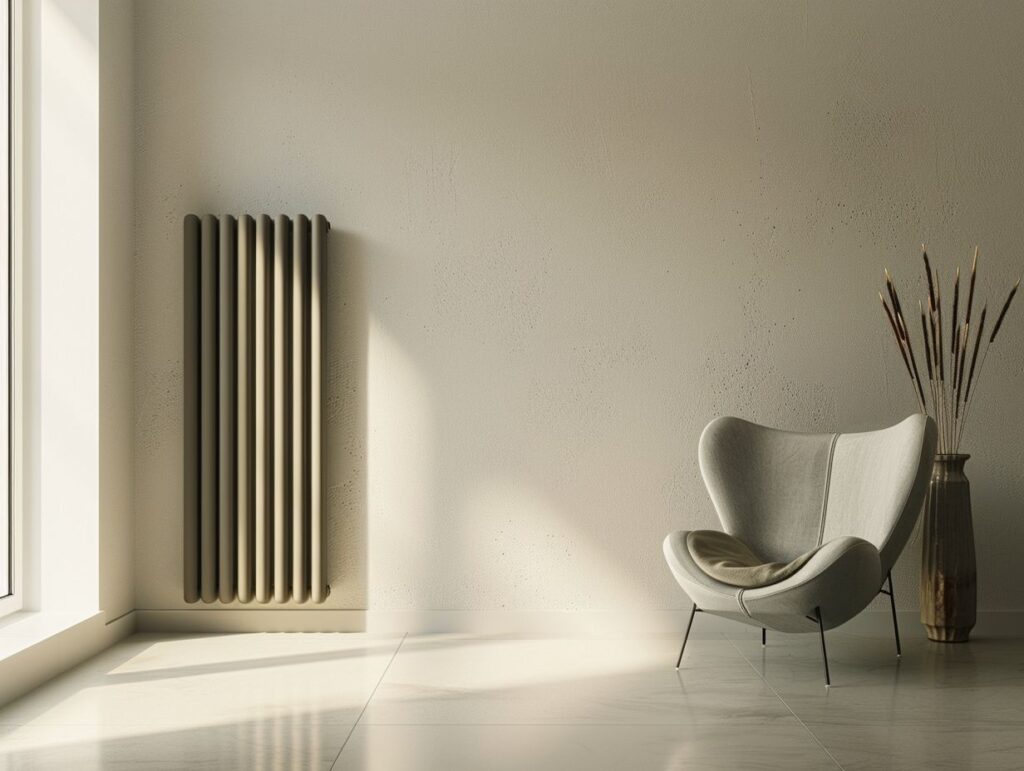If you are looking to give your home a fresh new look, one way to update your space is by painting your radiators.
In this article, we will discuss the basics of painting radiators, including the types that can be painted and the benefits of doing so. We will also provide you with a step-by-step guide on how to paint contemporary radiators, as well as tips for maintenance and touch-ups.
Before you start, it is important to consider and keep in mind important safety precautions. This comprehensive guide will ensure you do not miss out on transforming your space with a simple coat of paint.
Key Takeaways:
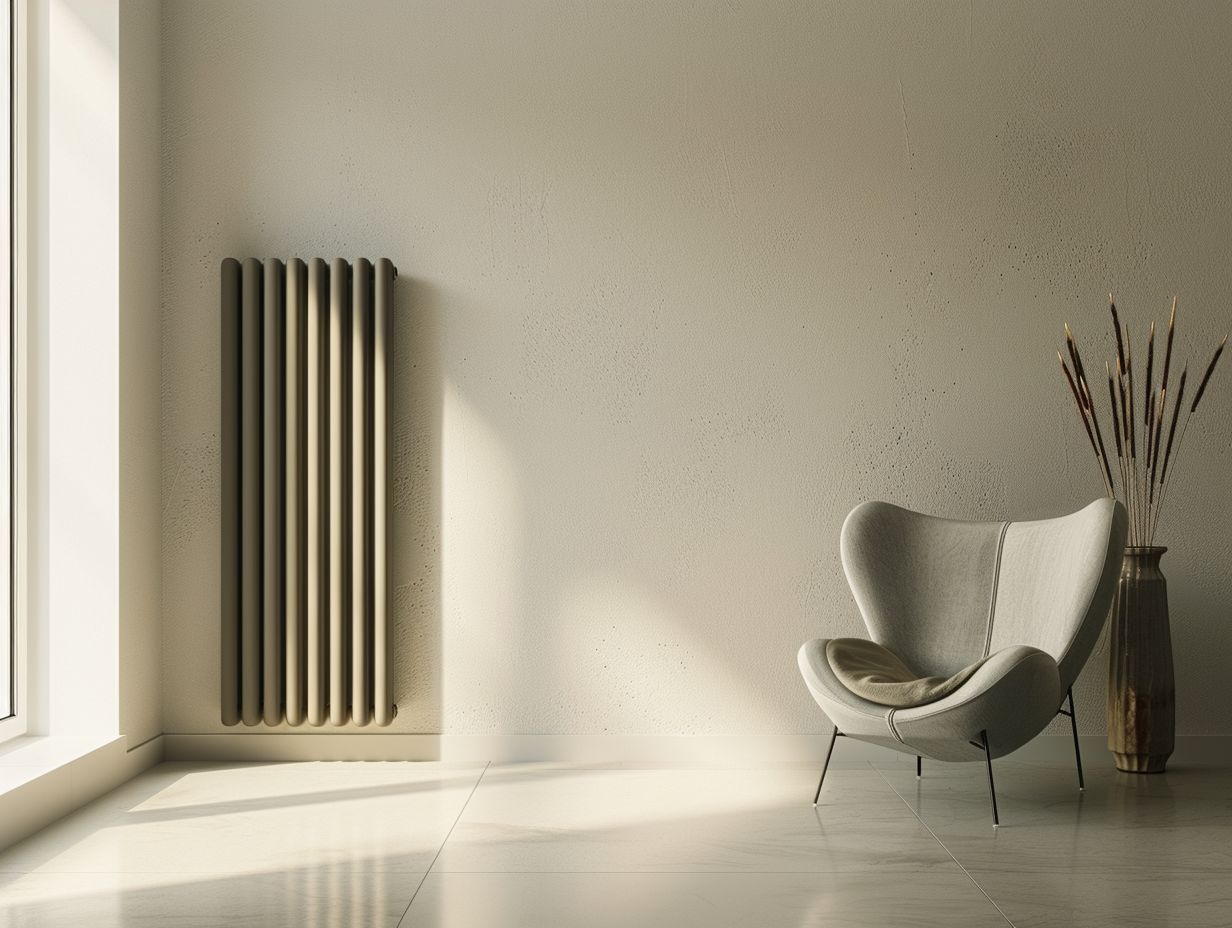
- Contemporary radiators can be painted to match any interior design style, giving you the opportunity to customise your space.
- Proper preparation, including cleaning and sanding, is crucial for a successful and long-lasting paint job on your radiator.
- Regular maintenance and touch-ups are necessary to keep your painted radiator looking fresh and to avoid potential risks and safety hazards.
The Basics of Painting Radiators
When painting radiators, you must have a solid grasp of the fundamentals to guarantee a successful and durable finish. Thorough preparation, selecting the right paint, and employing proper application techniques are key factors in attaining a professional outcome that enhances the room’s aesthetic appeal.
Types of Radiators That Can Be Painted
When painting various types of radiators, such as those made of steel, cast iron, or aluminium, it is essential to consider the surface material of the radiator to determine the appropriate primer and paint for the job.
For steel radiators, which are valued for their durability and heat conductivity, it is crucial to use a metal-specific primer to ensure proper adhesion. Opting for an oil-based enamel paint for steel radiators is recommended as it provides excellent coverage and can withstand high heat levels.
Cast iron radiators, known for their classic appearance, require a rust-inhibiting primer due to their susceptibility to corrosion. When painting cast iron radiators, acrylic or latex paints are suitable choices as they can deliver a smooth finish.
Aluminium radiators, lightweight and efficient in heat transfer, need a primer specifically designed for non-ferrous metals before applying a durable acrylic or epoxy paint to achieve a lasting finish.
Benefits of Painting Radiators
When you paint radiators, you not only improve the visual appeal of a room but also provide a protective coating that helps to prevent rust and corrosion. A fresh coat of paint can enhance the heat efficiency of the radiator.
The aesthetic advantages of painting radiators extend beyond mere colour enhancement. It has the potential to completely revamp the look and atmosphere of a space, harmonising with the decor and creating a unified visual appeal.
By applying a protective layer of paint, you shield the radiator’s metal surface from moisture and other damaging elements, thereby extending its lifespan. In terms of functionality, a well-maintained radiator operates more efficiently, effectively distributing heat throughout a room and creating a more comfortable environment.
Preparation for Painting
For a successful radiator painting job, proper preparation is essential. Begin by thoroughly cleaning the surface, sanding it to create a smooth base, and carefully selecting the appropriate primer to ensure optimal adhesion of the topcoat.
Cleaning and Sanding the Radiator
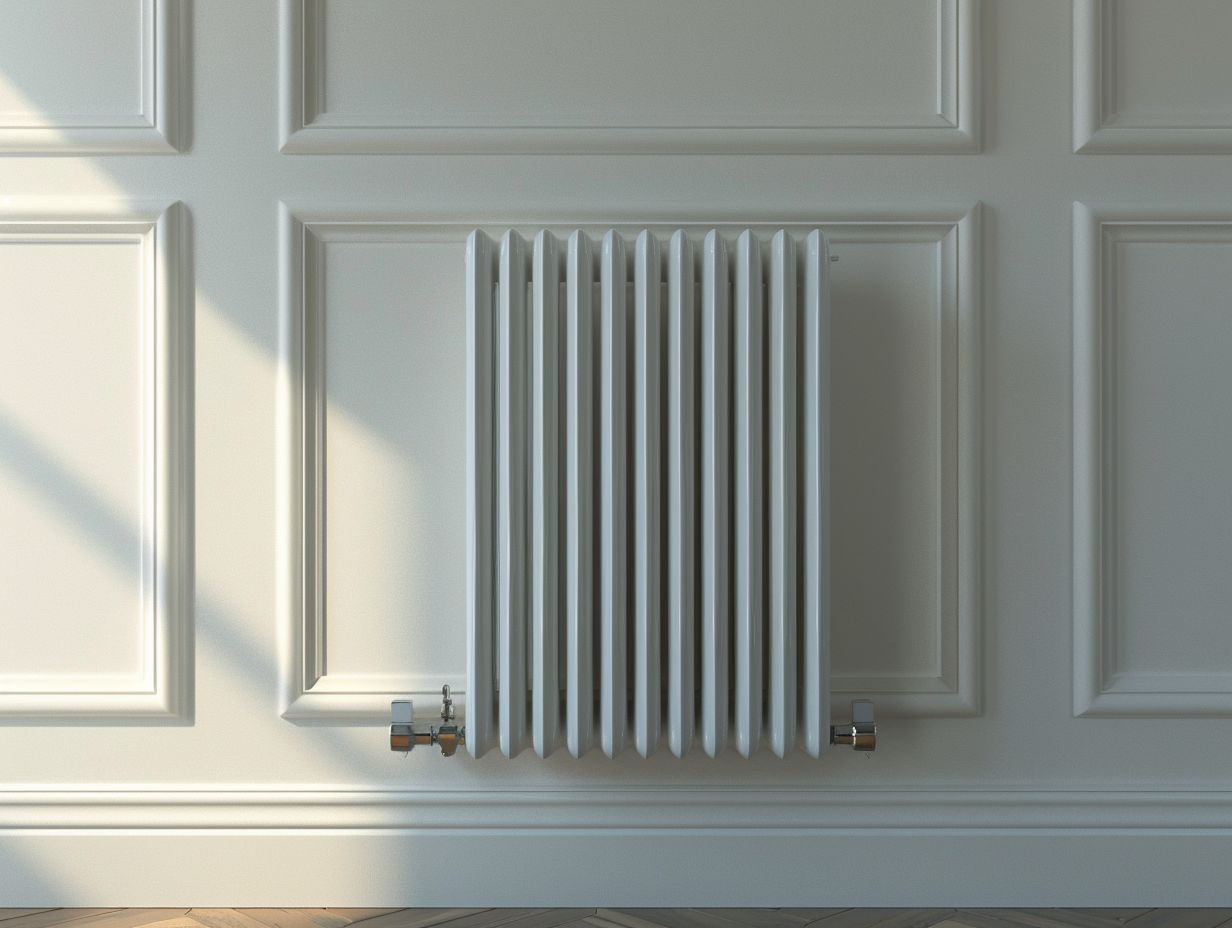
Before you begin painting a radiator, it is imperative to thoroughly clean off any dust, debris, or existing paint. Gently sanding the surface will help create a smooth base for the new paint to adhere to, ensuring a professional and polished finish.
This cleaning and sanding process plays a critical role in preparing the radiator’s surface for the paint application. By eliminating any contaminants or imperfections, such as rust or old paint, the paint will bond more effectively, resulting in a longer-lasting and more durable finish.
A clean and dry surface is essential to facilitate proper paint adhesion, preventing potential issues like peeling or bubbling in the future. Sanding the surface helps roughen it slightly, providing the paint with a better grip and ensuring a more uniform application of the final coat.
Choosing the Right Paint
When selecting paint for a radiator, you should prioritize choosing a high-heat resistant primer and topcoat in a color that complements the decor of the room. It is important that the paint you choose provides a durable and long-lasting coating.
When evaluating the heat-resistant properties of the paint, it is essential to opt for paints that are specifically designed to withstand high temperatures without compromising on quality or appearance.
Coordinating the paint color with the overall ambiance of the space can enhance the visual appeal of the radiator and seamlessly integrate it into the room’s design. Ensuring that the selected paint offers a durable coating will not only protect the radiator from wear and tear but also contribute to the longevity of its finish.
How to Paint Contemporary Radiators?
Achieving a seamless and refined finish when painting contemporary radiators demands a modern application approach. By meticulously following a detailed step-by-step guide, you can guarantee a uniform coating and a professional outcome that perfectly complements the room’s contemporary aesthetic.
Step-by-Step Guide
When painting radiators effectively, following a step-by-step guide is crucial. Each stage, from applying the primer to adding the final coat, plays a pivotal role in achieving a professional and durable finish. Here is a professional guide to help you:
- Begin by thoroughly cleaning the radiator surface to eliminate dust and grease residue using a gentle detergent and water.
- Next, meticulously inspect the radiator for any rust spots or uneven areas, sanding them down to ensure a seamless surface.
- Subsequently, apply a top-quality metal primer to enhance adhesion and prevent corrosion.
- Once the primer has dried, select a heat-resistant paint in your preferred colour and apply it uniformly using a small brush or a paint sprayer.
- Repeat the painting procedure for a consistent and smooth finish, ensuring each coat dries entirely before progressing to the next step.
Maintenance and Touch-Ups
Ensuring proper maintenance is essential for keeping your painted radiators looking fresh and vibrant. Consistent touch-ups, thorough cleaning, and careful maintenance are crucial in preserving the paint finish and prolonging the lifespan of the radiators.
Tips for Keeping Your Painted Radiator Looking Fresh
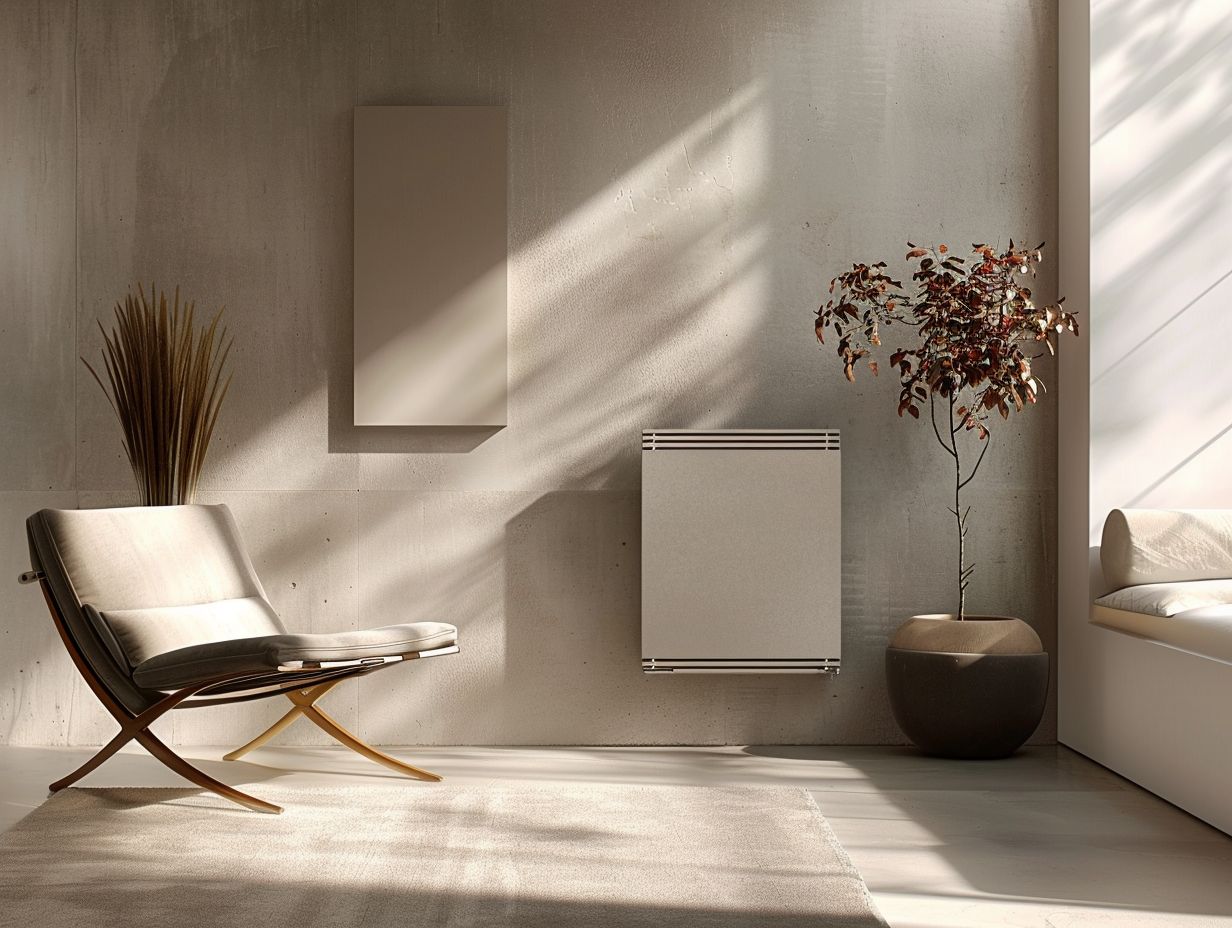
To maintain the fresh appearance of painted radiators, it is recommended that you clean them regularly with a soft cloth and mild detergent. It is important to avoid using abrasive cleaners as they may damage the colour and finish of the radiators.
When cleaning painted radiators, it is crucial to begin by dusting them to eliminate any loose particles before proceeding with the soft cloth and mild detergent. In case of stubborn stains, you may want to utilise a gentle cleaning solution specifically formulated for painted surfaces.
Additionally, be cautious of temperature changes surrounding the radiator, as excessive heat can impact the longevity of the paint. For enhanced protection of the finish, it is advisable to consider applying a clear coat sealant once a year. This maintenance practice will help in preserving the radiators’ vibrancy and enhancing their resilience against wear and tear over an extended period.
Considerations before Painting
When starting a radiator painting project, you need to consider various factors such as the type of radiator, surface condition, and the quality of existing paint. Having a thorough understanding of these considerations is crucial for achieving a successful outcome.
Potential Risks and Safety Precautions
When painting radiators, you face certain risks, particularly concerning inhalation of fumes and working in areas with poor ventilation. To mitigate these risks effectively, it is crucial for you to implement safety precautions such as wearing a mask and ensuring adequate ventilation in your workspace.
Selecting the right type of paint for radiators is a critical step in ensuring the durability and longevity of the finish. Opting for paints specifically designed for high-heat surfaces is essential to prevent issues like peeling or flaking.
Ahead of painting, it is imperative to properly prepare the radiator surface by tasks such as sanding and cleaning. This preparation will contribute to a more professional and enduring outcome. Always adhere to the manufacturer’s instructions and guidelines for the specific paint you are using.
By diligently following these precautions and steps, you can safely and effectively transform your radiators while maintaining a professional standard.
Alternatives to Painting
When considering options for updating radiators, you may want to explore alternatives to painting. One option is to utilise professional metal finishing services or to look into radiator covers as a means to change the appearance without paint. These alternatives can present a variety of aesthetic options.
Professional metal finishing services provide a durable and high-quality solution for refreshing radiators. Through the application of finishes such as chrome, brass, or nickel, this approach can not only improve the visual appeal of radiators but also offer long-term protection against corrosion.
Alternatively, radiator covers offer a versatile solution that not only conceals the radiator but also introduces a decorative element to the room. Available in various styles and materials to cater to different interior design preferences, radiator covers are a popular choice for individuals seeking a convenient and efficient transformation.
Frequently Asked Questions
Can Contemporary Radiators Be Painted?
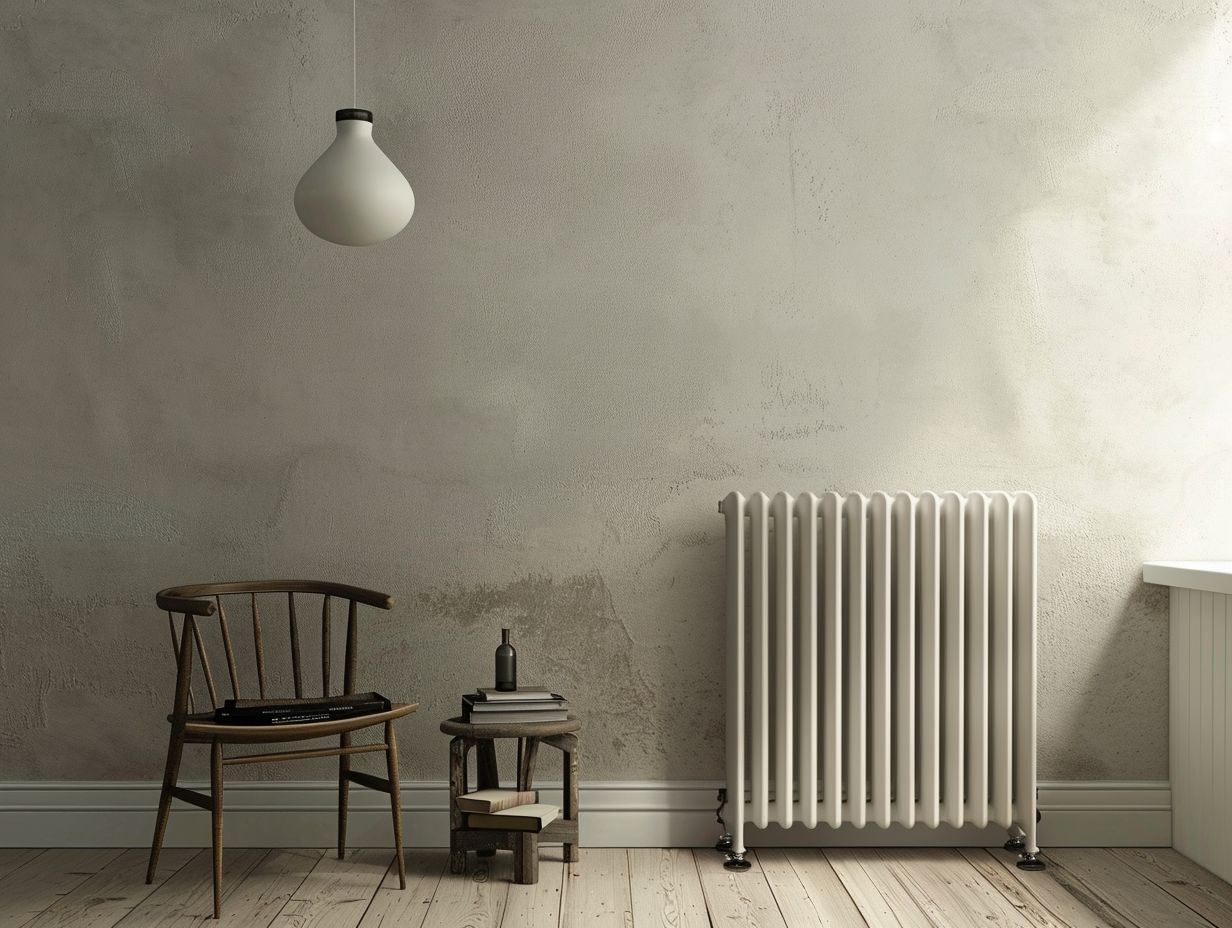
Yes, contemporary radiators can be painted. In fact, many modern radiators are designed with paint-friendly surfaces to allow for customisation.
What kind of paint should I use to paint my contemporary radiator?
It is recommended to use a high-quality, heat-resistant paint specifically designed for radiators. These types of paint can withstand high temperatures and prevent peeling or discoloration.
How do I prepare my contemporary radiator for painting?
Before painting, it is important to clean the radiator thoroughly with a degreaser and water. Any dust or grime on the surface can prevent the paint from adhering properly. It is also recommended to lightly sand the surface for better paint adhesion.
Can I paint my contemporary radiator while it is still attached to the wall?
It is possible to paint a contemporary radiator while it is still attached to the wall, but it may be more difficult and time-consuming. It is recommended to remove the radiator from the wall and lay it flat for easier and more even painting.
Are there any precautions I should take when painting a contemporary radiator?
Yes, it is important to make sure the radiator is completely cool before beginning the painting process. It is also recommended to cover any nearby surfaces and floors to protect them from paint splatters. Additionally, it is important to follow the manufacturer’s instructions and safety precautions when using heat-resistant paint.
Can I repaint my contemporary radiator in the future?
Yes, you can repaint your contemporary radiator in the future if you wish. However, it is important to properly prepare the surface and select a high-quality heat-resistant paint to ensure a successful repaint. It is also recommended to wait for the radiator to cool down completely before painting again.

